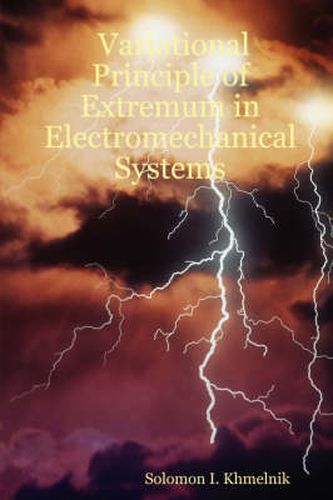Readings Newsletter
Become a Readings Member to make your shopping experience even easier.
Sign in or sign up for free!
You’re not far away from qualifying for FREE standard shipping within Australia
You’ve qualified for FREE standard shipping within Australia
The cart is loading…






The variational principle of extremum is stated and proved for electromechanical systems of arbitrary configuration wherein the electromagnetic, mechanical, thermal hydraulic and other processes are going on. It is shown that for such systems there exists a pair of functionals with a global saddle point. For systems without electric circuits the suggested principle is equivalent to the minimum action principle. The principle is generalized for the systems described by partial differential equations, and in particular by Maxwell equations. A speedy universal algorithm for computation of such systems with arbitrary excitations is described. In this algorithm a method of searching for global saddle point simultaneously on two functionals is realized. The book contains numerous examples, including those presented as M-functions of the MATLAB system.
$9.00 standard shipping within Australia
FREE standard shipping within Australia for orders over $100.00
Express & International shipping calculated at checkout
Stock availability can be subject to change without notice. We recommend calling the shop or contacting our online team to check availability of low stock items. Please see our Shopping Online page for more details.
The variational principle of extremum is stated and proved for electromechanical systems of arbitrary configuration wherein the electromagnetic, mechanical, thermal hydraulic and other processes are going on. It is shown that for such systems there exists a pair of functionals with a global saddle point. For systems without electric circuits the suggested principle is equivalent to the minimum action principle. The principle is generalized for the systems described by partial differential equations, and in particular by Maxwell equations. A speedy universal algorithm for computation of such systems with arbitrary excitations is described. In this algorithm a method of searching for global saddle point simultaneously on two functionals is realized. The book contains numerous examples, including those presented as M-functions of the MATLAB system.